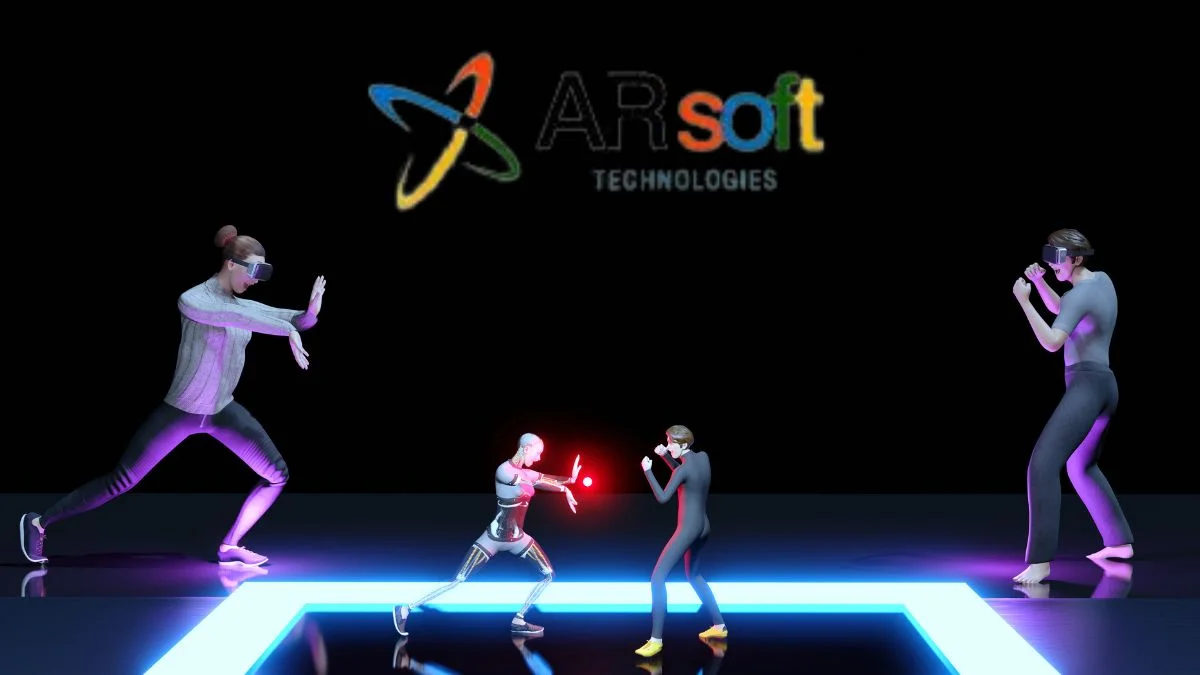Augmented Reality (AR) has revolutionized how we interact with the digital world, merging the physical and virtual realms in ways that enhance our understanding and enjoyment of our surroundings. One significant player in this space is “AR Soft,” a term that encapsulates the software technologies enabling AR applications. This article delves into the essence of AR Soft, its applications, benefits, and the future of augmented reality.
Understanding Augmented Reality
Augmented Reality is an interactive experience that overlays digital content onto the real world, providing users with an enriched environment. Unlike Virtual Reality (VR), which immerses users in a completely artificial setting, AR enhances the existing world by adding three-dimensional objects, sounds, videos, and graphics. This technology leverages various devices, including smartphones, tablets, and AR glasses, to create a seamless blend of the digital and physical.
The core of AR lies in its software, which processes real-time data from the user’s environment and integrates virtual elements in a way that appears realistic. This is where AR Soft comes into play, serving as the backbone of various AR applications.
The Role of AR Soft
AR Soft encompasses a range of software tools and frameworks designed to develop AR applications. It includes the following key components:
1. Development Platforms
Several development platforms facilitate the creation of AR applications. These platforms often provide developers with tools to create, test, and deploy AR experiences quickly. Some notable AR development platforms include:
- Unity: A popular game engine that supports AR development through its AR Foundation framework, allowing developers to build cross-platform AR applications.
- ARKit and ARCore: Apple’s and Google’s respective AR frameworks enable developers to create AR experiences specifically for iOS and Android devices, respectively.
- Vuforia: A comprehensive AR platform that provides robust image recognition and tracking capabilities, allowing developers to overlay digital content onto real-world images.
2. Computer Vision
Computer vision is a vital component of AR Soft, enabling applications to interpret and understand the user’s environment. It uses algorithms to analyze images from the camera, recognize objects, and track their movement. This technology allows AR applications to place digital content accurately within the real world.
3. 3D Modeling and Rendering
Creating compelling AR experiences often involves designing 3D models that can be seamlessly integrated into the physical environment. AR Soft includes software tools for 3D modeling and rendering, allowing developers to create realistic virtual objects that enhance the user’s experience. Tools such as Blender, Maya, and SketchUp are commonly used for this purpose.
4. User Interface and Interaction Design
AR applications require intuitive user interfaces (UIs) that facilitate interaction between the user and the digital elements. AR Soft encompasses UI design tools and frameworks that enable developers to create user-friendly experiences. These interfaces must consider factors such as gesture recognition, touch input, and spatial awareness to ensure a smooth user experience.

Applications of AR Soft
The versatility of AR Soft has led to its adoption across various industries. Here are some notable applications:
1. Gaming and Entertainment
AR has gained immense popularity in gaming, with titles like Pokémon GO showcasing how digital elements can enhance gameplay. AR Soft enables developers to create interactive gaming experiences that encourage users to explore their real-world environments while engaging with virtual characters and challenges.
2. Education and Training
AR is transforming education by providing immersive learning experiences. For instance, AR Soft can enhance anatomy lessons by allowing students to visualize and interact with 3D models of the human body. Similarly, training programs for various professions, such as medicine and engineering, can leverage AR to simulate real-world scenarios.
3. Retail and E-commerce
Retailers are utilizing AR to create engaging shopping experiences. AR Soft allows customers to visualize products in their own spaces before making a purchase. For example, furniture retailers can offer AR applications that enable users to see how a piece of furniture would look in their home, thereby enhancing customer satisfaction and reducing return rates.
4. Real Estate
In the real estate sector, AR Soft facilitates virtual property tours, allowing potential buyers to explore properties remotely. By overlaying digital information on physical spaces, real estate agents can provide an immersive experience that showcases a property’s features and layout.
5. Healthcare
AR is making strides in healthcare by providing surgeons with real-time data during procedures. AR Soft can overlay critical information, such as patient vitals or anatomical details, onto the surgical field, improving precision and outcomes.
Benefits of AR Soft
The integration of AR Soft into various applications offers several advantages:
1. Enhanced User Experience
By combining the real and virtual worlds, AR Soft creates engaging and immersive experiences that captivate users. This enhances enjoyment and fosters a deeper understanding of complex concepts.
2. Increased Engagement
AR applications often encourage user interaction, leading to higher levels of engagement. Whether in gaming, education, or retail, AR experiences can capture users’ attention and keep them invested.
3. Improved Learning Outcomes
In educational settings, AR has been shown to improve learning outcomes by providing interactive and visual learning experiences. Students can grasp complex concepts more effectively when they can visualize and manipulate 3D models.
4. Cost-Effective Solutions
AR Soft can reduce costs associated with training, marketing, and product visualization. Businesses can simulate environments and scenarios without the need for physical resources, leading to more efficient operations.
The Future of AR Soft
The future of AR Soft looks promising, with continuous advancements in technology and increasing adoption across industries. Key trends to watch for include:
1. Advancements in Hardware
As AR hardware, such as smart glasses and headsets, becomes more accessible and affordable, the demand for AR applications will grow. Improved hardware capabilities will enable developers to create more sophisticated and immersive experiences.
2. Integration with AI
The integration of artificial intelligence (AI) with AR Soft is poised to enhance user experiences further. AI can analyze user behavior and preferences, allowing for personalized AR experiences that cater to individual needs.
3. Expansion of 5G Technology
The rollout of 5G technology will significantly enhance AR experiences by providing faster data transmission and lower latency. This will enable more seamless and real-time interactions between digital and physical elements.
4. Cross-Platform Experiences
As AR development platforms evolve, there will be a push for cross-platform compatibility, allowing users to access AR experiences across various devices seamlessly. This will enhance the reach and impact of AR applications.
Conclusion
AR Soft is at the forefront of augmenting our reality, offering innovative solutions that enhance our interactions with the world around us. From gaming and education to retail and healthcare, the applications of AR are vast and varied, transforming how we experience and understand our environment. As technology continues to evolve, AR Soft will play a crucial role in shaping the future of immersive experiences, making our world richer and more interactive than ever before.









